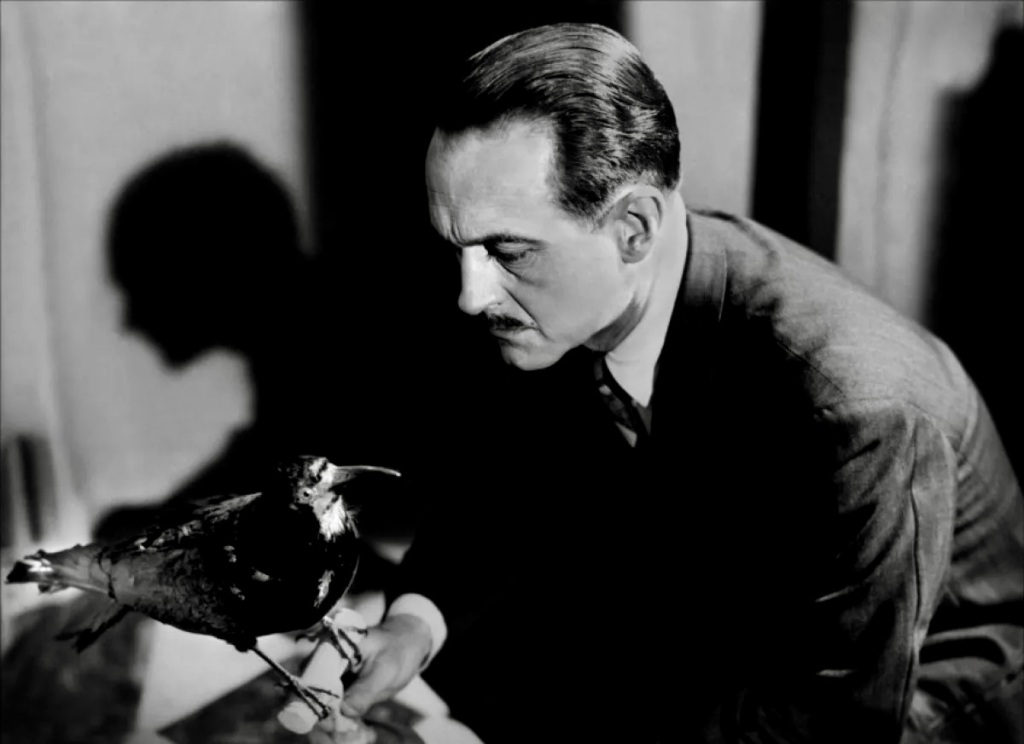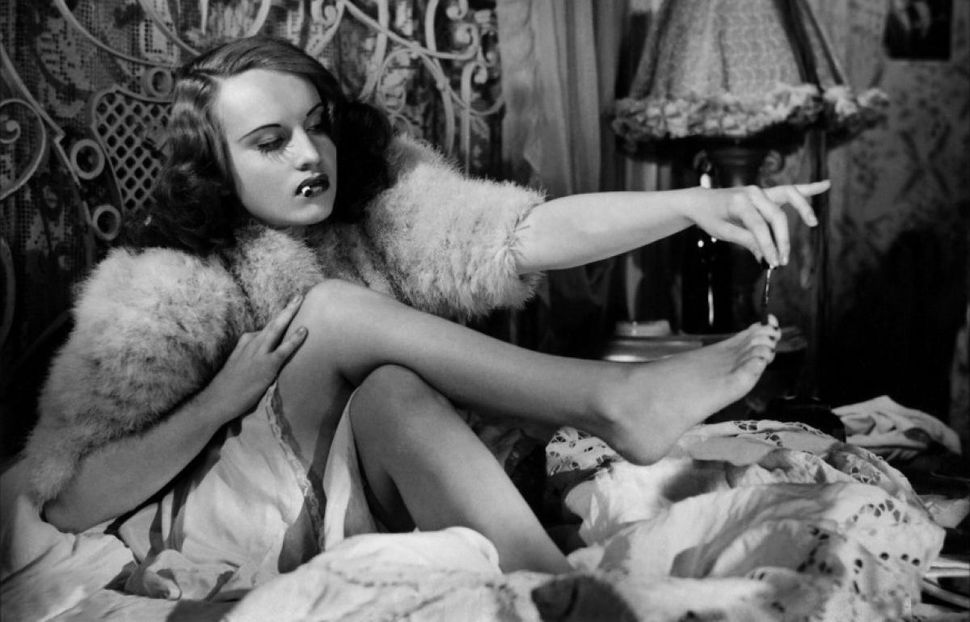In a small village in rural France, an anonymous writer sends a series of poison-pen letters to selected residents. Signed with the mysterious name of “Le Corbeau”, the letters accuse the new physician in town, Dr. Remy Germain (Pierre Fresnay), of adultery and performing abortions. While the townspeople are scandalized by this information, it soon becomes apparent that Dr. Germain is not the only target of this vicious character assassination and that other respected members of the community will soon be victimized, their most shameful secrets exposed to all by “The Raven.” Soon, the villagers begin turning on each other, creating an atmosphere of increasing paranoia and mistrust that culminates in murder, suicide and an angry mob scene. There might not be a more misanthropic view of humanity than Le Corbeau (aka The Raven, 1943), directed by Henri-Georges Clouzot (The Wages of Fear, 1953), but the movie is not only a dark, brilliantly conceived melodrama which unfolds like a suspense thriller but a cautionary character study of how fear of others brings out the worst in everyone.
The film was actually based on a true case that occurred in the city of Tulle, France in 1917. It was there that Angele Laval tormented the local villagers with a series of malicious letters following a failed romance, resulting in three suicides. Certainly, scandalous rumors and their destructive effect (whether true or not) have been the subject of many films (These Three (1936) by Lillian Hellman and its 1961 remake, The Children’s Hour are two examples), but Le Corbeau may be the most sinister and relentlessly pessimistic treatment yet of this theme. And we’re not even talking about movies that show the destruction effects of social media and the internet on people’s lives such as Disconnect (2012), The Circle (2018) and Mainstream (2020).
Henri-Georges Clouzot got his start in the film industry as a director of dubbing at UFA’s Neubabelsburg Studios in Berlin in 1932. He eventually graduated to assistant director and dabbled in screenwriting before moving into the director’s chair in 1933. His first breakout commercial hit was The Murderer Lives at Number 21 (1942) which featured Pierre Fresnay and Suzy Delair as a crime solving team in the style of a comedy-mystery like The Thin Man. But his follow-up movie would be a radical departure.

Conceived in controversy from the start, Le Corbeau was filmed in France during the German Occupation under the auspices of Continental, a distribution company run by Alfred Greven. At the time, many French directors, actors and technicians who were opposed to the Vichy regime and refused to work for the German-controlled Continental, fled to other countries for work. But Clouzot chose to remain and film Le Corbeau, which today is considered by many critics to be one of the few French film masterpieces to emerge from the World War II years. Its unsettling, jaundiced world view prefigures the “film noirs” Hollywood would produce in the years immediately following it. And there are several key suspense sequences here, ranking with the best of Alfred Hitchcock (Clouzot was often referred to as ‘the French Hitchcock’): the scene where the nurse, Marie Corbin (Helena Manson), flees to her home, hounded by an angry crowd; a sequence where an anonymous letter drifts down from the rafters of a church while the horrified congregation watch in disbelief; the final shot of a murderess fleeing the scene of her revenge.

While there is no denying the skillfulness of Clouzot’s direction in creating such an intense psychological drama, French critics and moviegoers alike were outraged by the picture. According to author Remi Fournier Lanzoni in his critical study, French Cinema, “a large number of viewers were reluctant to praise the film, some because they had trouble categorizing it, while others were morally offended by it. Le Corbeau was indeed besieged from both sides of the political scene. The anti-Nazi activists and members of the Resistance considered Le Corbeau pro-Nazi propaganda and fiercely fought (in the clandestine press) against the screening of the film. To them, it exemplified a collaboration with and submission to the German authorities by portraying a gloomy image and the malicious character of French people…The right wing and Vichy supporters also demanded the film be banned for its immoral values.”

As a result, Le Corbeau was barred from theatres in France and, after the war, Clouzot and the film’s screenwriter, Louis Chavance, were accused by the newly formed Comite de liberation du cinema francais (CLCF) of deliberately making an anti-French movie, commissioned by Josef Goebbels. Even actor Pierre Fresney was punished for his involvement in the film and he was briefly jailed for six weeks. Afterwards, he fell out of favor with the public and never again achieved the prestigious heights of his earlier career which included the Marcel Pagnol trilogy of Marius (1931), Fanny (1932) and Cesar (1936), Alfred Hitchcock’s The Man Who Knew Too Much (1934), and Jean Renoir’s Grand Illusion (1937). Nevertheless, Fresney continued to make films, garnering critical acclaim for later roles such as Monsieur Vincent (1947) and Dieu a Besoin des Hommes aka God Needs Men (1950), but he became disillusioned with the film industry and returned to theatre acting in 1960.
Despite the scandalous charges against Le Corbeau, the CLCF never passed a clear verdict on the film though Clouzot was given a lifetime suspension from the French film industry. The sentence was eventually reduced to two years and Clouzot was allowed to continue his career, making the much-admired crime drama, Quai des Orfevres/Jenny Lamour, in 1947. Some critics feel his greatest work was produced in the 1950s with The Wages of Fear (1953) and Diabolique establishing his reputation and popularity on an international level. Yet, Le Corbeau remains one of his peak achievements. The Guardian called it “a shrewd glimpse into the heart and mind of Vichy France, disclosing a kind of 20-century Salem” and Georges Sadoul in Dictionary of Films proclaimed it “an ingeniously suspenseful thriller with the audience being led to believe that each character in turn is the guilty one on the basis of the psychological motivation.”

In 1951, director Otto Preminger remade the film for 20th-Century-Fox as The 13th Letter, starring Charles Boyer and Linda Darnell, but most film critics at the time thought it failed to match the quality of the original. In recent years, there has been a revival of interest in Preminger’s version but it may be a lost film at this point as no decent quality print of it appears to be available.
For those interested in purchasing a copy of Le Corbeau, your best option is probably the blu-ray edition offered by The Criterion Collection from September 2022. The extra features include an interview on the film by filmmaker Bertrand Tavernier, excerpts from a documentary on French cinema featuring director Henri-Georges Clouzot and an essay by film scholar Alan Williams.
*This is a revised and expanded version of an article that originally appeared on the Turner Classic Movies website.

Other links of interest:
https://www.bfi.org.uk/lists/henri-georges-clouzot-seven-essential-films






